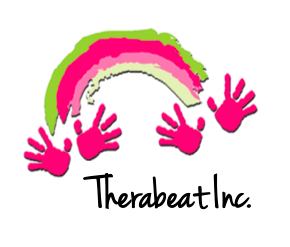Because music is predominantly an auditory stimulus, it is often assumed that music listening and music therapy would not be appropriate for children who are hard of hearing or have experienced hearing loss. Research throughout the decades has concluded that music perception and appreciation influence other factors and make music therapy appropriate for improving language development, speech production, socialization, and the development of musicality.
Therapists must consider various types of hearing loss when planning music therapy sessions for clients with hearing impairments. Conductive hearing loss occurs due to disease, malformation, or obstruction in the outer or middle ear, and devices such as hearing aids are often helpful. Sensorineural hearing loss occurs due to damage or absence of the hair cells in the inner ear. Hearing aids and cochlear implants are used to assist with hearing. The thing to know about sensorineural hearing loss is that the more extensive the damage is the less effective hearing aid devices are. The final type of hearing loss is central hearing loss, which occurs due to damage to the central nervous system.
The age of onset of hearing loss often results in a wide variety of needs associated with hearing loss. The primary need of children who experience hearing loss is the development of spoken and written forms of language. An article on music therapy for children who are deaf or hard of hearing states that “children with severe hearing losses may have speech with improper pitch level, omitted or improperly formed speech, and less intelligible speech.”
This results in music therapists targeting four main goal areas when treating individuals with hearing loss. These goals are language development, speech production, auditory training, and social skills attainment. Music therapy for language development uses interventions to increase the appropriate use of vocabulary, increase spontaneous communication, and increase sentence structure. Lyrics of songs should be selected to introduce and practice target vocabulary. This includes songs filled with vocabulary such as numbers, colors, and animals. Interventions such as writing songs or pairing sign language with music allow clients to generate new ideas through expressive language. Music therapy for speech production uses interventions to increase vocalization, increase production of natural speech rhythms, and increase the production of common speech sounds. Therapeutic singing allows for the controlled production of speech sounds in a predictable and controlled tempo. Lastly, music therapy interventions are used to increase social skills for children by providing structured opportunities for taking turns, paying attention, following directions, sharing, and expressing feelings appropriately.
Overall, music therapy is an adaptable approach that can support individuals with hearing loss and those who are hard of hearing. Music therapy can aid in the impact that hearing loss can have on a child’s life through targeting that enhances language and speech development.
-Rebecca Smith, Music Therapy Intern
References:
Edwards, J. (Ed.). (2017). The Oxford handbook of music therapy (First published in paperback). Oxford University Press.
Gfeller, K. (2024). Music as Communication and Training for Children with Cochlear Implants. In N. M. Young & K. Iler Kirk (Eds.), Pediatric Cochlear Implantation (pp. 443–458). Springer Nature Switzerland. https://doi.org/10.1007/978-3-031-67188-3_27

